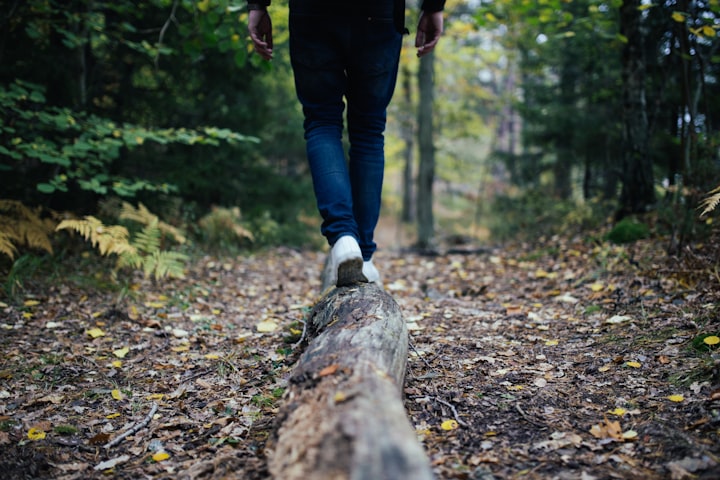Tracing Light Footsteps: The Evolution of Ultralight Backpacking Through the Decades
Read about the evolution of ultralight backpacking, from 1960s pioneers to today's global community. Discover how minimalism in outdoor adventures fostered innovation, a tighter bond with nature, and a culture of sharing experiences and gear insights.

Introduction
The allure of the great outdoors has beckoned adventurers for generations, each era bringing forth its unique blend of trailblazing individuals, innovative gear, and evolving philosophies on how to interact with the natural world. Among the various threads in the fabric of outdoor exploration, ultralight backpacking has woven its distinct narrative, championing the notion of less is more. The ultralight ethos emphasizes carrying only the essentials to foster a deeper connection with the outdoors, a philosophy that has garnered a devoted following over the decades.
In the early days, the '60s sprinkled the first seeds of ultralight backpacking. Emma "Grandma" Gatewood’s bold step on the Appalachian Trail with nothing more than a duffel bag of basics spoke to many, showing that a lighter load could open doors to a deeper connection with the wild.
As we jumped into the '90s, Ray Jardine popped up on the scene, championing the ultralight philosophy with his groundbreaking book. The era wasn't just about Jardine though. Folks like Lynne Whelden chipped in, each adding their unique flavor to the growing ultralight backpacking stew.
The story got juicier in the late '90s and early 2000s. With the Internet now in the picture, ultralight enthusiasts found a playground to share ideas and geek out about the latest gear. The whispers of going light started growing louder, bouncing off the walls of online forums and bustling outdoor communities.
As we sauntered into the 2000s and beyond, the ultralight narrative started hitting its stride. The community grew, the gear got cooler, and the idea of going light wasn't just a quirky choice, but a global trend. The market threw open its doors to a buffet of ultralight gear, and folks were loving it.
Today, we're part of a buzzing ultralight culture. With a click or a tap, we dive into a world filled with gear reviews, trail tales, and a community that shares the love for carrying less and experiencing more. The ultralight tale is far from over; it's a living, breathing narrative, adding new chapters with every lightweight step on the trail.
Looking back, it's been a wild ride. From a few lone voices in the '60s to a global chorus now, the ultralight backpacking tale is a testament to the magic of simplicity, community, and a shared love for the wild. And the trail continues, with more adventures, gear innovations, and hearty laughs with fellow ultralight enthusiasts awaiting us in the chapters yet to be written.
The Simple Beginnings: Ultralight Backpacking in the 1960s
In the 1960s, a fresh way of enjoying the outdoors started to take shape, marking the early days of ultralight backpacking. This was a time when a few brave souls decided to step away from the usual way of doing things, choosing to carry less so they could enjoy more.
One name that shines from this era is Emma "Grandma" Gatewood. In 1963, at the spry age of 67, she decided to hoof it along the Appalachian Trail with nothing but a simple duffel bag. Inside, she carried only the bare necessities like an army blanket and a plastic sheet. This audacious move showcased the heart of ultralight backpacking to many - the notion that carrying less lets you soak up more.
Back in the day, the mantra was to pack your fears. Folks believed in stuffing a lot of gear for their outdoor jaunts. But Gatewood's trek showed there was another trail to tread - a trail that beckoned folks to roam the wild without the drag of too much gear.
Grandma Gatewood's story stirred the pot and tickled the curiosity of outdoor lovers. The ultralight backpacking idea was fresh and thrilling. It vibed with the ethos of the 1960s, a time when shedding material shackles was in the air.
Yet, ultralight backpacking was still a bud, waiting for the right time to bloom. The gear on hand was pretty basic, and the light pack idea was still on the fringes. But the ember had caught.
The 60s offered a sneak peek into the promise of ultralight backpacking. The early yarns of adventurers like Gatewood, with their no-frills gear and zest for exploration, laid the first stones for a movement that would sprout in the years ahead.
Recap
Glancing back, the 60s was a time that teased a big shift in the realm of outdoor fun. The plucky moves of folks like Emma Gatewood, meshed with the spirit of the 60s, began to poke at the old norms. It was a nudge towards simplicity, a call to relish the wild with less stuff in tow. Through the rearview mirror, the 60s sketch the modest beginnings of a movement that keeps shaping our outdoor adventures today.
The Jardine Era (1990s): The Evolution of Ultralight Backpacking
The 90s brought a fresh wave to the ultralight backpacking scene, with Ray Jardine leading the charge. His game-changing book, "PCT Hiker's Handbook," later known as "Beyond Backpacking," stirred the pot, challenging the old school outdoor ways. His idea of carrying less to dive deeper into the wilderness experience caught on, as delved into in The Legacy of Ray Jardine: Pioneer of Ultralight Backpacking.
But the ultralight saga of the 90s isn't just about Ray Jardine. It's a rich tapestry with threads from many other backpacking buffs keen on a minimalist approach to romping the great outdoors.
Enter Lynne Whelden, a big name in the ultralight circles, who sang the praises of lightweight hiking through his documentaries (try watching: Lightweight Backpacking SECRETS REVEALED). His videos hit a chord with many, shedding light on the how-tos and goodies of ultralight backpacking. Whelden’s fire for lightweight hiking, shown in his films, played a big part in spreading the ultralight word and building a circle of enthusiasts around it.
Along with Whelden and Jardine, a bunch of other backpackers chipped in to the growing ultralight narrative. They shared tales, cooked up new lightweight gear, and threw in their two cents on forums and in write-ups, adding more colors to the ultralight backpacking story.
The friendly vibes and shared love for ultralight backpacking among these trailblazers nurtured a buzzing community. The pooled wisdom and tales from the trail had a big say in the backpacking scene, nudging it towards a more minimalist and green path.
Recap
The 90s, dubbed the Jardine Era, was also a time of community blooming and wisdom swapping among ultralight backpackers. Folks like Lynne Whelden and others threw a lot into the growing ultralight pot. Their joint efforts helped peel the mystery off ultralight backpacking, opening it up to more people. This era wasn't just about solo acts but a group gig that pushed ultralight backpacking from a small nook to a comfy spot among outdoor lovers.
The Late 1990s - 2000s: The Ultralight Wave Gains Momentum
As the late 90s came around, the little seeds planted by trailblazers like Ray Jardine and Lynne Whelden began to sprout and take root. The ultralight backpacking scene moved from just a neat idea to a buzzing community. This era saw a blend of stuff that really gave ultralight backpacking a nudge into the spotlight.
Technological Innovations
New, lighter, and tougher materials stepped onto the stage, playing a big role in the ultralight saga. Fresh takes on fabric and gear design led to backpacks, tents, and other must-haves that were a lot lighter but still sturdy and handy. Companies caught the ultralight bug and started cooking up gear that hit the spot for the growing crowd of ultralight fans.
Knowledge Sharing
The late 90s and early 2000s brought the rise of online hangouts for ultralight backpacking. Forums, blogs, and websites popped up, turning into go-to spots for swapping ideas, stories, and tips on cutting down pack weight while staying comfy and safe. It was a boom time for sharing know-how and building a close-knit community of ultralight lovers.
Environmental Awareness
As more folks tuned into being eco-friendly, ultralight backpacking started to shine. The idea of carrying less to be kinder to nature clicked with more people. Ultralight backpacking was now seen as a cool way to not only lighten the load but also leave a softer footprint on Mother Earth.
Media Exposure
Movies, books, and articles on ultralight backpacking started to pop up, giving the movement a good stir. This media buzz helped pull back the curtain on ultralight backpacking, showing it as a fun and doable way to dive into outdoor fun.
Advent of Ultralight Brands
This time also saw the birth of brands all about ultralight gear. Their love for minimalist design and light materials gave fans more choices to shed pack weight, adding more fuel to the ultralight fire.
Recap
The late 90s and early 2000s were a time of growing up and getting a nod from the mainstream for ultralight backpacking. A mix of tech upgrades, community vibes, and a growing love for eco-friendliness set the stage for the ultralight ideas to blossom. The shared stoke for a simple outdoor life pushed the ultralight backpacking scene forward, bringing a flood of cool gear and a growing tribe of fans. This wasn’t just a rerun of what folks like Jardine kicked off, but a big leap towards making ultralight backpacking a hot pick for outdoor buffs.
Carrying Less, Experiencing More: The Ultralight Backpacking Voyage from 2000 to Now
As we waved goodbye to the 90s and stepped into the 2000s, the ultralight backpacking scene was like a quiet stream, flowing slowly but surely. The digital world was booming, and so was the chatter among outdoor enthusiasts about shedding some pack weight to soak up more of nature's vibes.
Community Expansion
The internet became a hot spot for ultralight fans. Forums, blogs, websites, you name it. They popped up, creating a cozy corner for folks to talk gear, share stories, and spread the ultralight gospel. Social media joined the party too, making it even easier for the ultralight tribe to grow and connect across the globe.
Gear Evolution
The 2000s saw gear getting a serious makeover. Brands were catching the ultralight bug, bringing to the shelves gear that was light, compact, and still got the job done. And as the years rolled by, gear kept getting cooler, with modern materials making stuff lighter yet tougher.
Educational Resources
Now, it wasn’t just about having the right gear. It was about knowing how to go light. Books, online courses, and workshops started cropping up, throwing out lifelines to those diving into the ultralight waters. And this educational wave just kept rolling, opening doors for more people to get the hang of ultralight backpacking.
Mainstream Recognition
Ultralight backpacking wasn’t just whispers among a small crowd anymore. It was making headlines in outdoor magazines and getting shoutouts from influencers. It was out of the shadows and basking in the mainstream sunlight, showing everyone that going light was a ticket to more fun and adventure.
Environmental Resonance
And as the world started tuning into the green channel, ultralight backpacking was singing the right tune. The less-is-more vibe was in harmony with the growing call to tread lightly on Mother Earth.
Trail Tales and Success Stories
Stories started floating around about folks crushing trails with just the basics in their packs. These tales were not just cool stories, they were proof that ultralight backpacking was not some fad, it was a legit way to hit the trails and have a blast.
Commercial Evolution
The gear market was buzzing. More brands were hopping on the ultralight train, creating a playground of gear options for ultralight enthusiasts. It was a good time to be an ultralight gear junkie, with a buffet of cool, lightweight gear to pick from.
Global Movement
Ultralight backpacking started as a little ripple in the big pond of outdoor adventure, mostly in the Western world. But now, it’s a wave rolling across the globe, with ultralight communities popping up from Tokyo to Timbuktu, adding a splash of global flavor to the ultralight culture.
Recap
From 2000 to now, ultralight backpacking has trotted a cool journey. From a quiet whisper to a global conversation, from limited gear options to a buffet of ultralight goodies, and from a small tribe to a global community. It’s been a ride of shedding pack weight, sharing knowledge, and soaking up the beauty of simplicity in the great outdoors. And as we look ahead, the ultralight trail seems to stretch invitingly, promising more adventures, more gear innovations, and more like-minded folks joining this minimalist march into nature’s heart.




